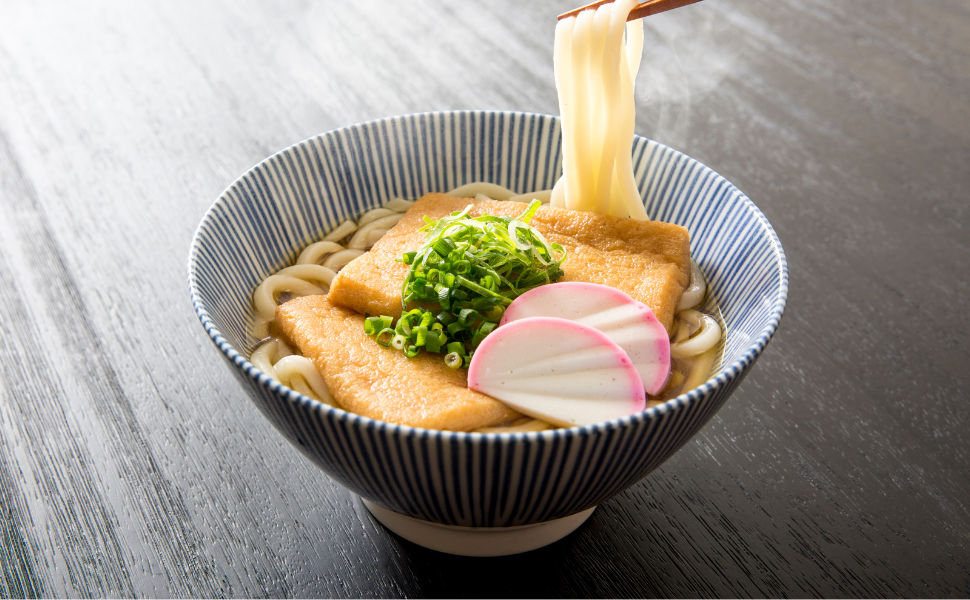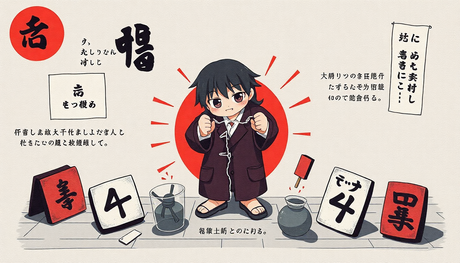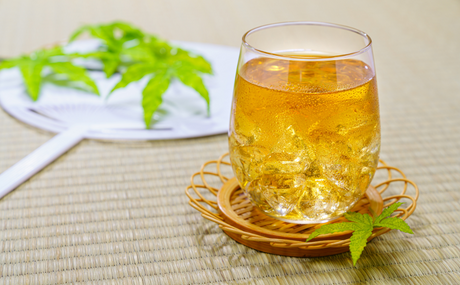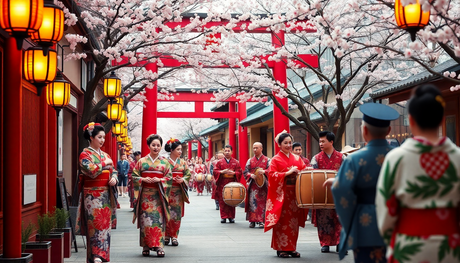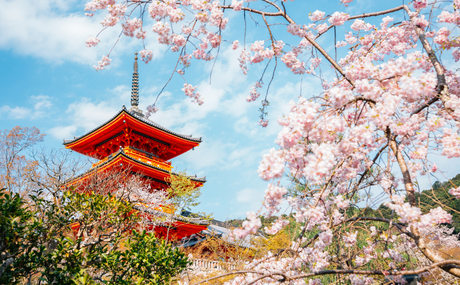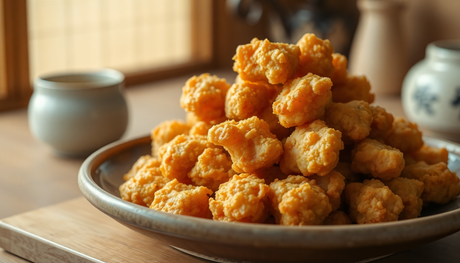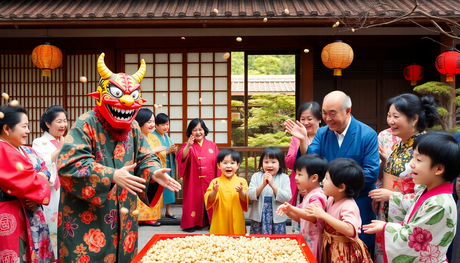When people think of Japanese food, sushi and ramen usually come to mind first. But if you ask locals what truly warms their soul, udon noodles often top the list. These thick, chewy wheat noodles are a comfort food staple in Japan—simple, satisfying, and full of flavor.
Whether served hot in a savory broth or cold with a refreshing dipping sauce, udon is the ultimate Japanese soul food that adapts to every season and region.
What Is Udon?
Udon (うどん) are thick noodles made from wheat flour, salt, and water. While the ingredients are basic, the technique behind making authentic udon is not. The dough is often kneaded by foot (yes, really!) to get that signature springy texture, then left to rest before being rolled and cut into 4–6 mm-wide noodles.
The most common way to enjoy udon is in a light, umami-rich dashi-based broth flavored with soy sauce and mirin, topped with green onions, fish cakes, or seasonal ingredients. But the beauty of udon is in its regional diversity—different parts of Japan put their own spin on this humble noodle dish.
Popular Regional Types of Udon in Japan
One of the most interesting things about udon is how it varies across Japan. Here are some of the most well-known regional udon varieties:
Sanuki Udon (Kagawa Prefecture)
Famous across Japan, Sanuki udon is known for its firm, chewy texture and square shape. It’s often served with a simple dipping sauce or in broth, topped with green onions, raw egg, or ginger. Kagawa is even nicknamed “Udon Prefecture” because of its deep love for this noodle!
Kishimen (Nagoya)
A flat, wide version of udon, Kishimen has a ribbon-like shape and is served in a soy-based broth. Toppings like aburaage (sweet fried tofu) and kamaboko (fish cake) are common in this Nagoya specialty.
Inaniwa Udon (Akita Prefecture)
Thin, smooth, and hand-stretched, Inaniwa udon has a delicate texture and is usually served cold with dipping sauce. It's considered a more refined style of udon, often gifted during special occasions.
Miso Nikomi Udon (Nagoya)
This rich and hearty udon is cooked in an intense miso broth, often served in a clay pot with chicken, egg, and seasonal vegetables. It’s perfect for cold days when you need something filling and flavorful.
Kitsune Udon (Osaka/Kyoto)
One of the most beloved udon dishes in Kansai, Kitsune Udon features a slice of sweetened fried tofu (called aburaage) on top. The name “kitsune” means fox, based on the folklore that foxes love aburaage.
Hot or Cold—Udon for Every Season
One of the best things about udon is how it fits the weather. It’s a year-round favorite in Japan because it transforms with the seasons.
In Winter: Hot Udon
There’s nothing better on a chilly day than a steaming bowl of hot udon in broth. Toppings like tempura, mushrooms, poached eggs, or grated daikon radish make it hearty and satisfying.
In Summer: Cold Udon (Zaru Udon)
When the weather heats up, cold udon becomes the go-to. Called Zaru Udon, these noodles are served chilled on bamboo trays with a light dipping sauce, green onions, wasabi, and sometimes grated ginger. It’s refreshing and light—perfect for Japan’s humid summers.
Udon in Modern Japan
Today, udon is everywhere in Japan—from traditional restaurants and home kitchens to convenience stores and train station stalls. It’s quick, customizable, and budget-friendly. Many udon restaurants offer self-service topping bars, where you can add tempura flakes, green onions, or spicy shichimi pepper to your bowl.
Udon is also gaining popularity abroad. More and more udon shops are opening in major cities around the world, bringing this versatile Japanese noodle to a global audience. But for many Japanese people, udon still feels like home—something warm and nostalgic that reminds them of childhood and family meals.
How to Eat Udon Like a Local
Want to enjoy your udon like a true local? Here are some tips:
Slurp Loud and Proud
In Japan, slurping your noodles is a sign that you’re enjoying your meal. It also helps cool the noodles and enhances the flavor. Don’t be shy!
Customize Your Toppings
At many udon shops, you’ll find a topping station where you can add your favorite extras. Try grated ginger, tempura flakes, green onions, or a dash of shichimi togarashi (Japanese seven-spice).
Explore Local Udon Varieties
If you’re traveling around Japan, take the opportunity to try the local udon specialty in each region. Each bowl tells a different story, rooted in local traditions and ingredients.
Final Thoughts: Why Udon Deserves a Spot in Your Food Bucket List
Udon might not have the visual flair of sushi or the global buzz of ramen, but it’s a dish that captures the heart of Japanese cuisine—simple, seasonal, and soul-satisfying. Whether you're seeking comfort in winter or a cool meal in summer, udon always delivers.
If you’re planning a trip to Japan, don’t miss out on trying freshly made udon at a local shop. And if you’re not traveling anytime soon, no worries—udon is easy to make at home and available at many Asian supermarkets around the world.
Once you’ve had your first perfect bowl, you’ll understand why so many people in Japan can’t live without it.

